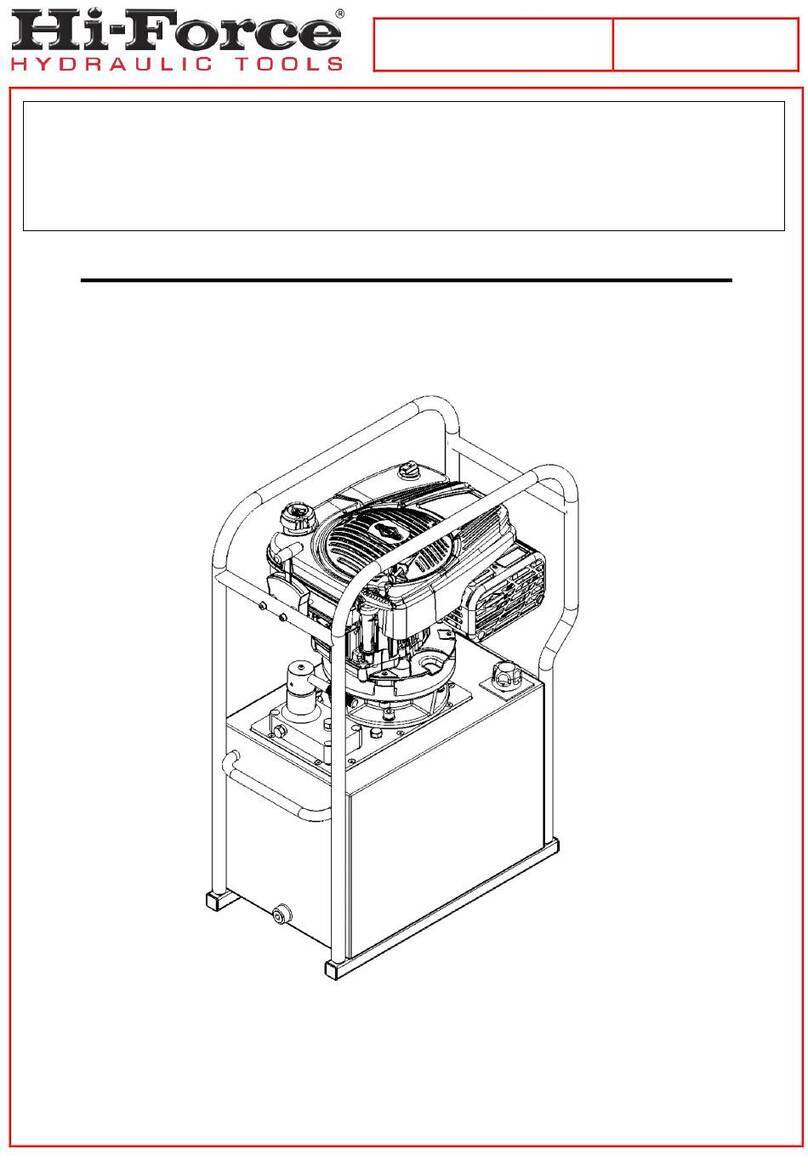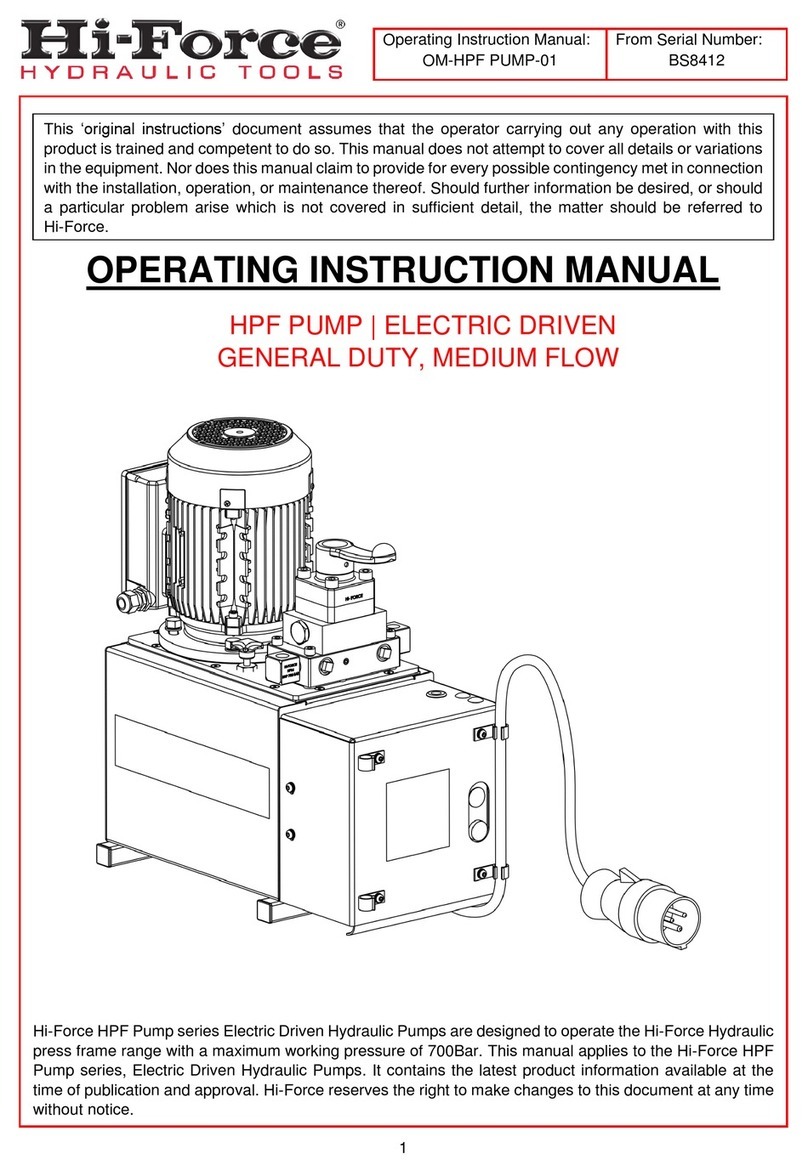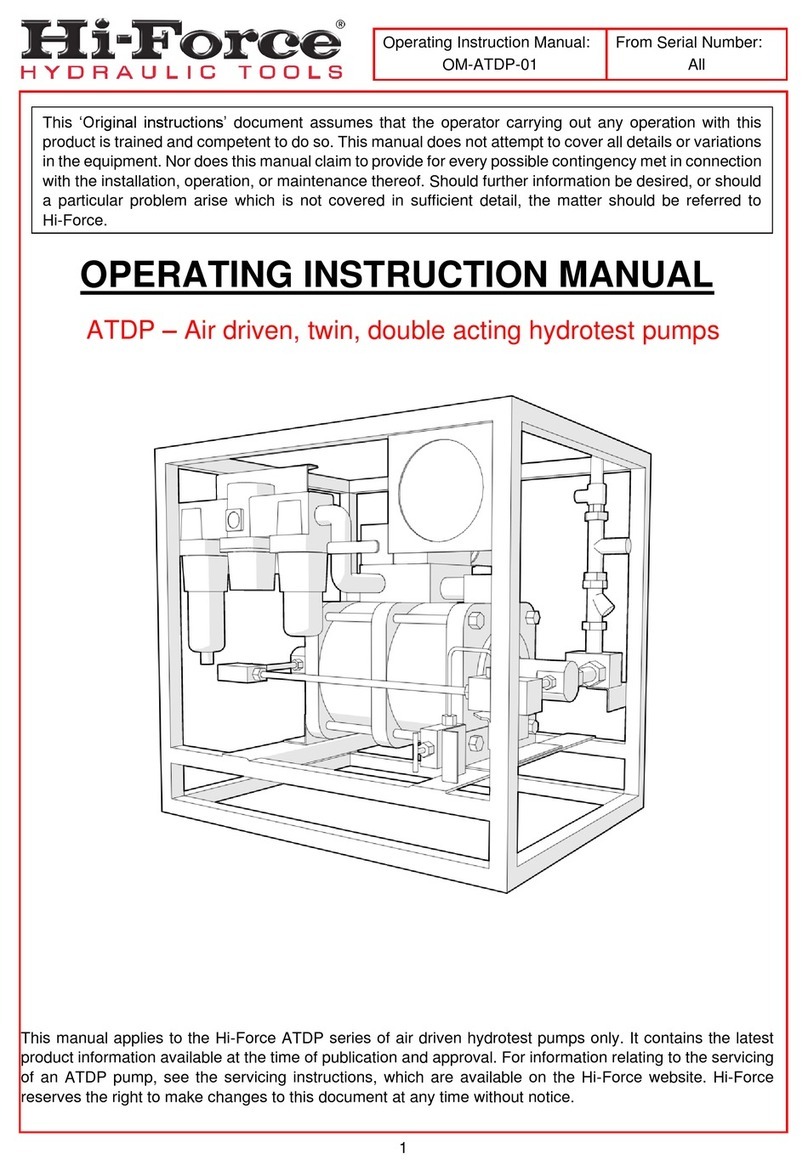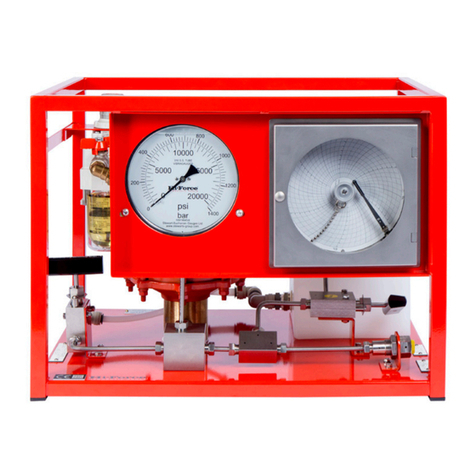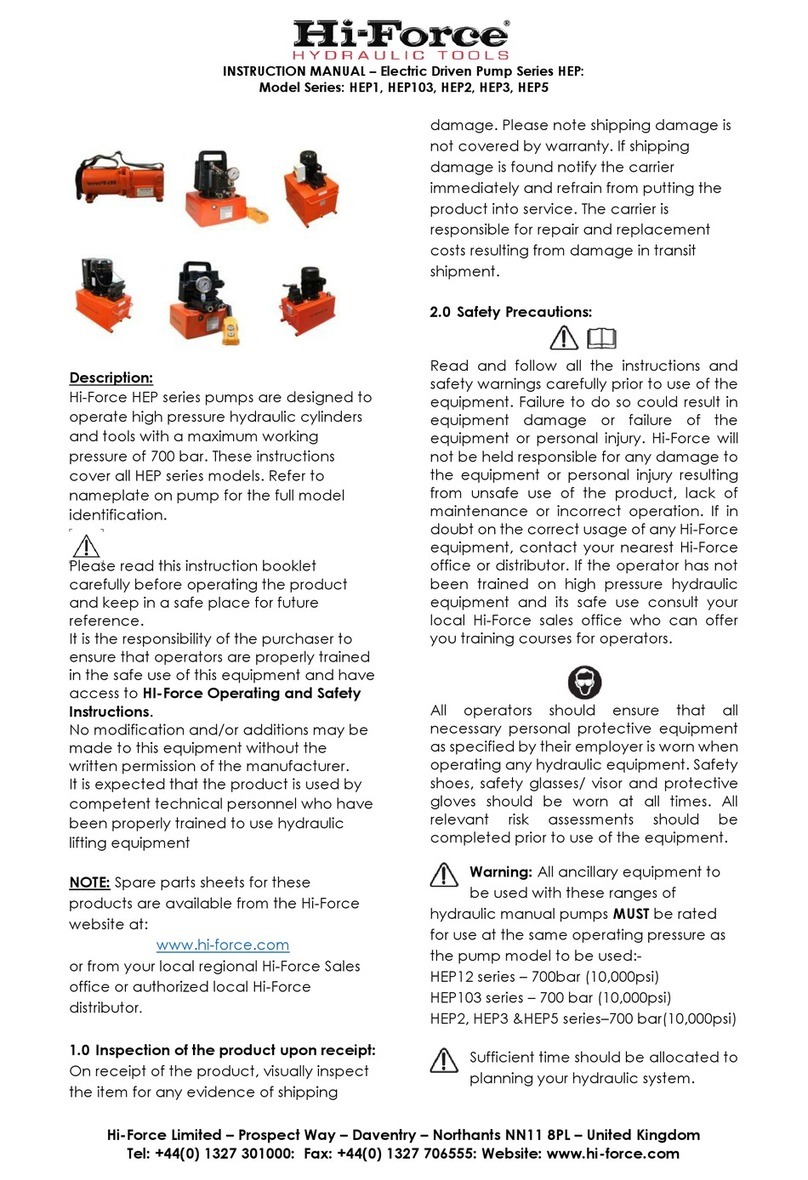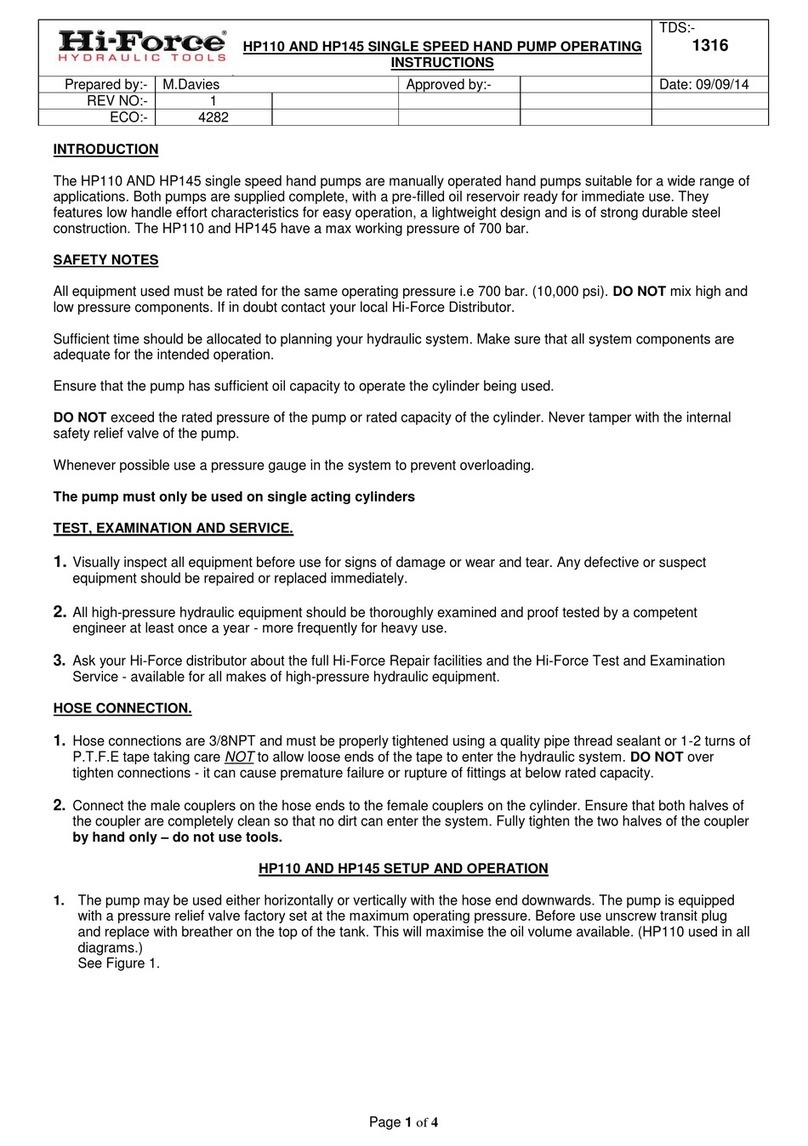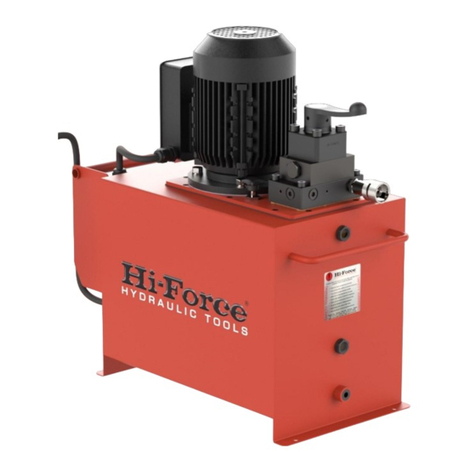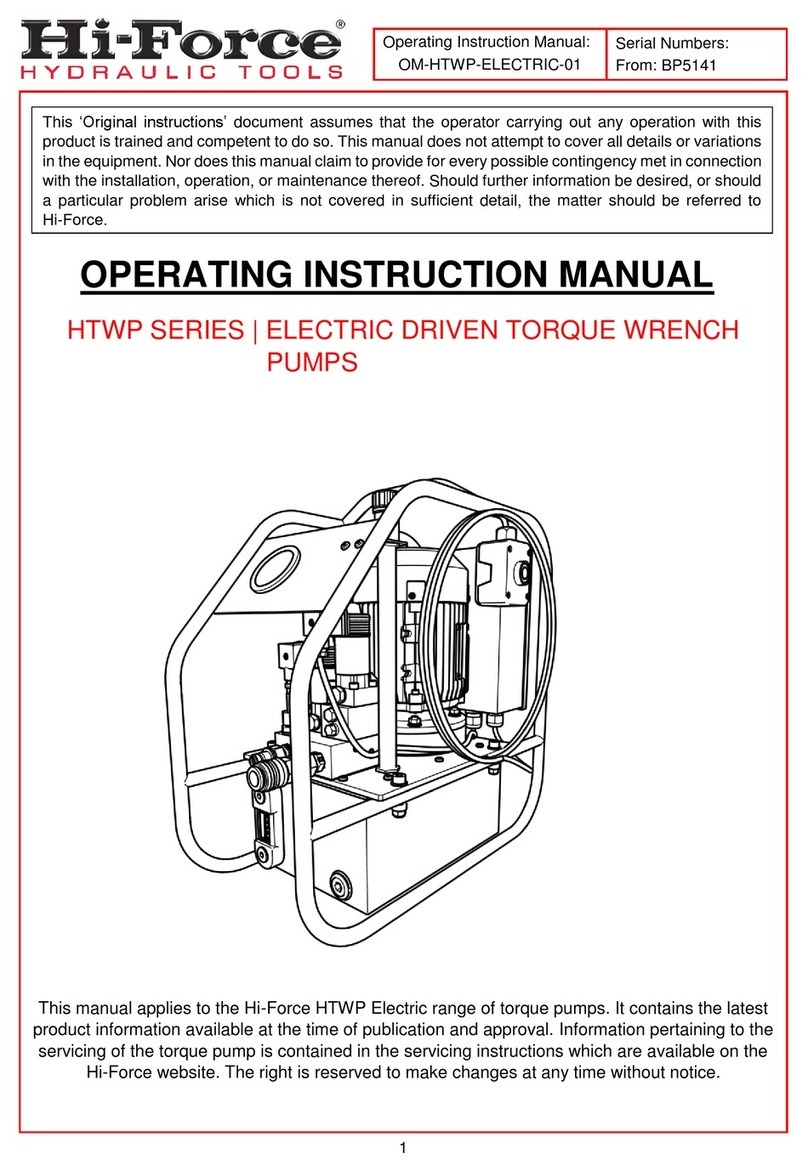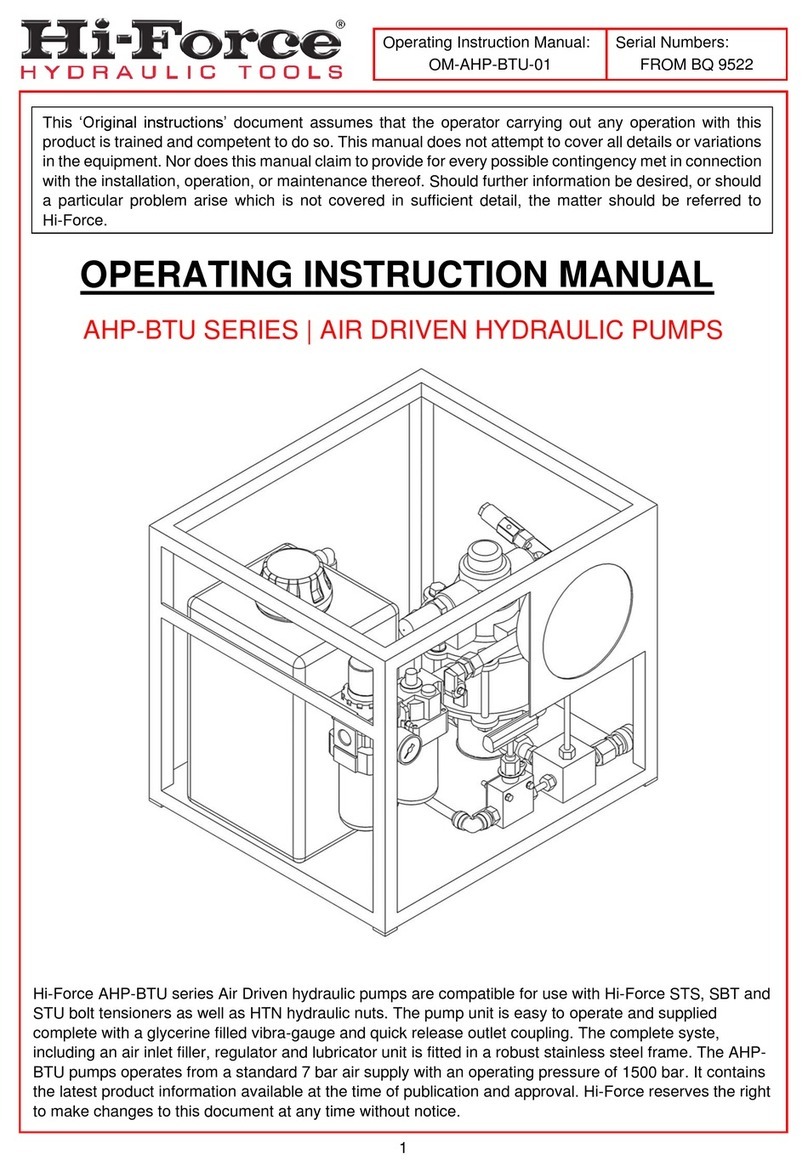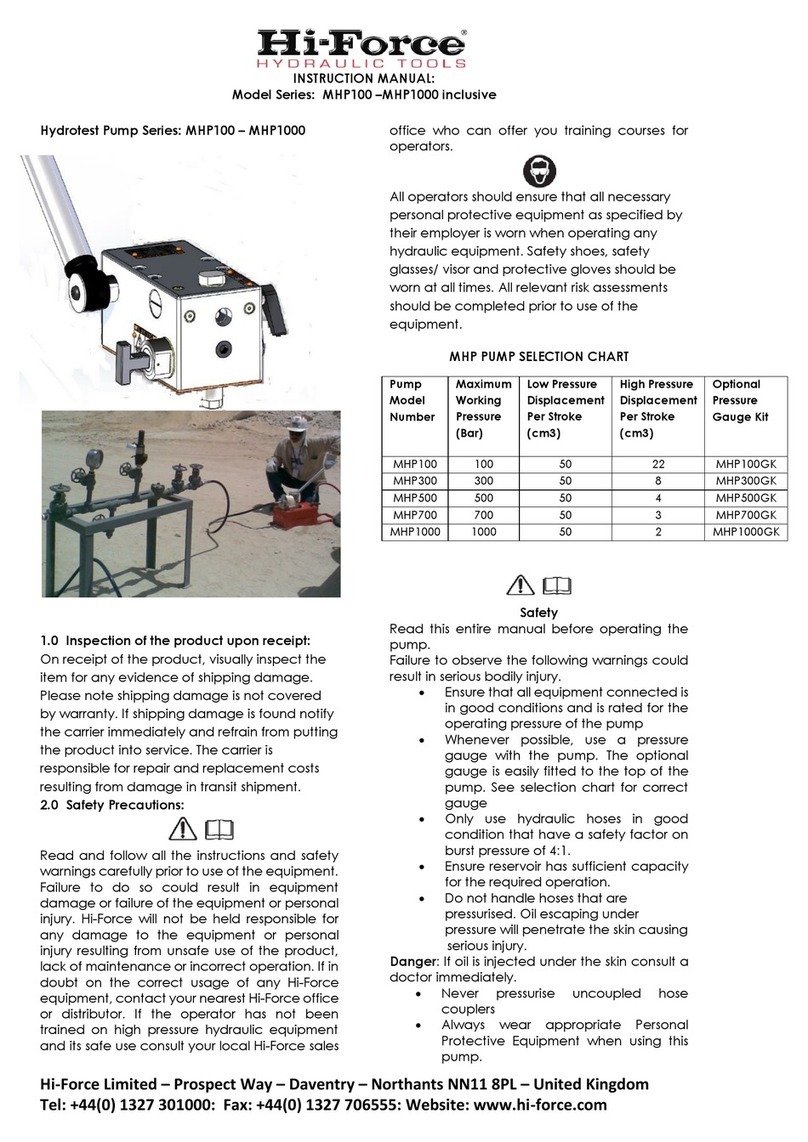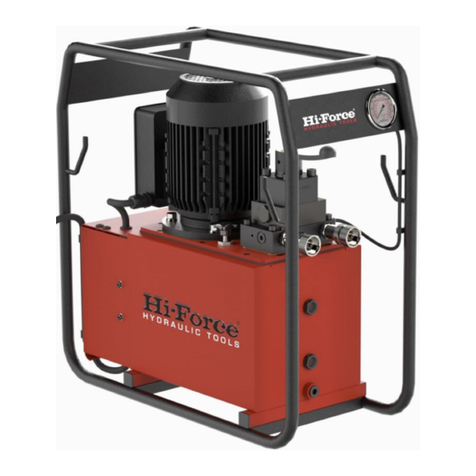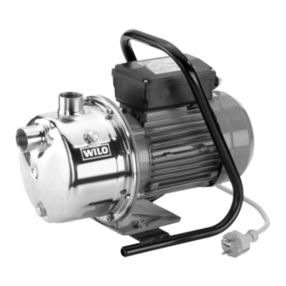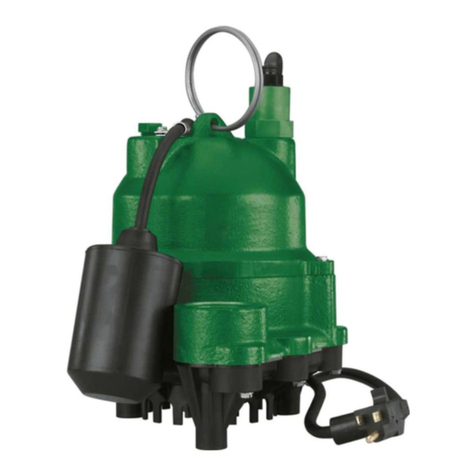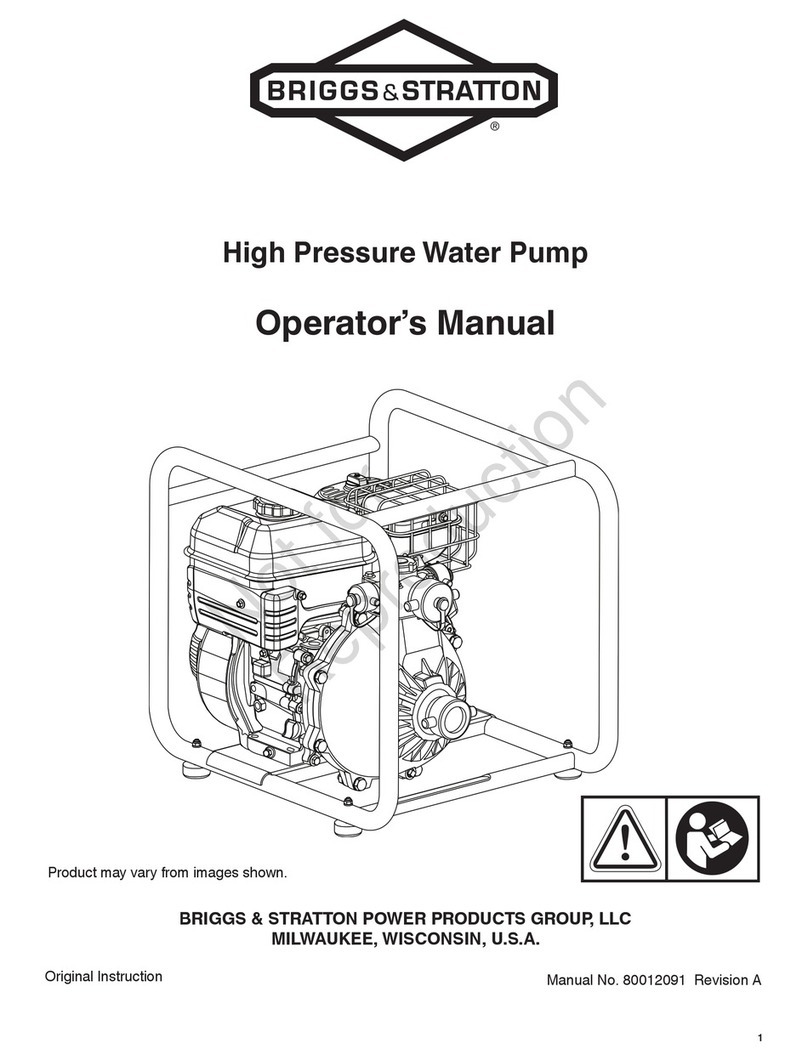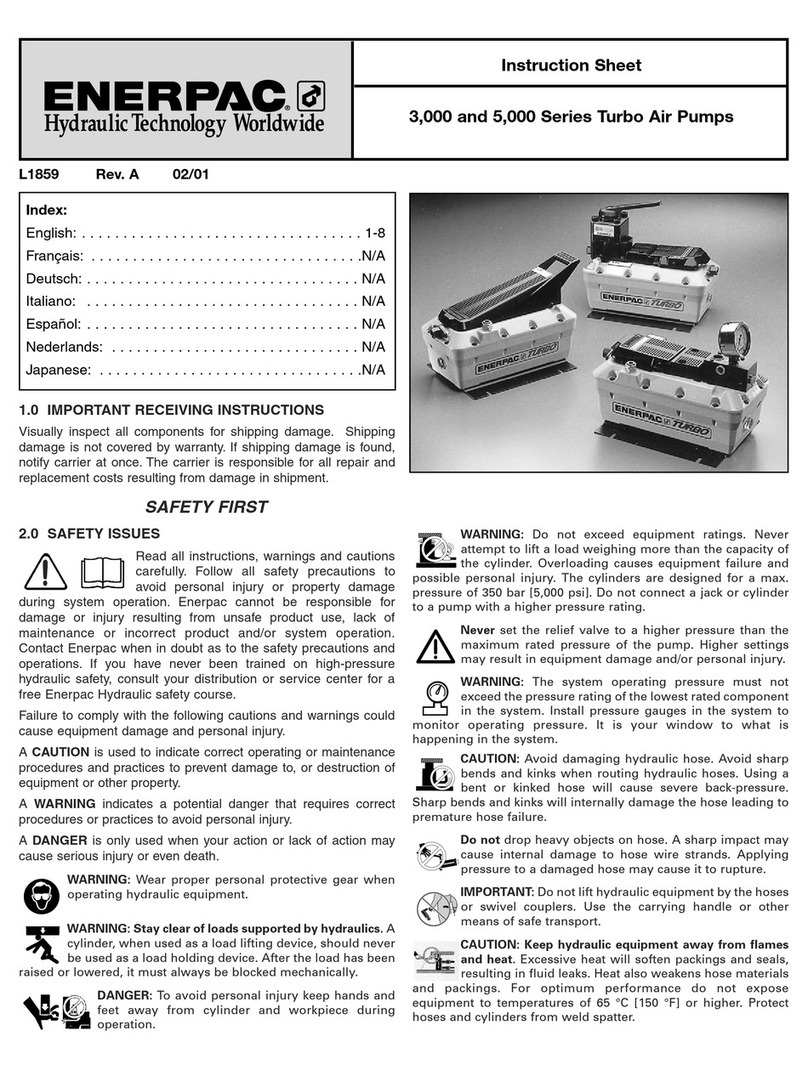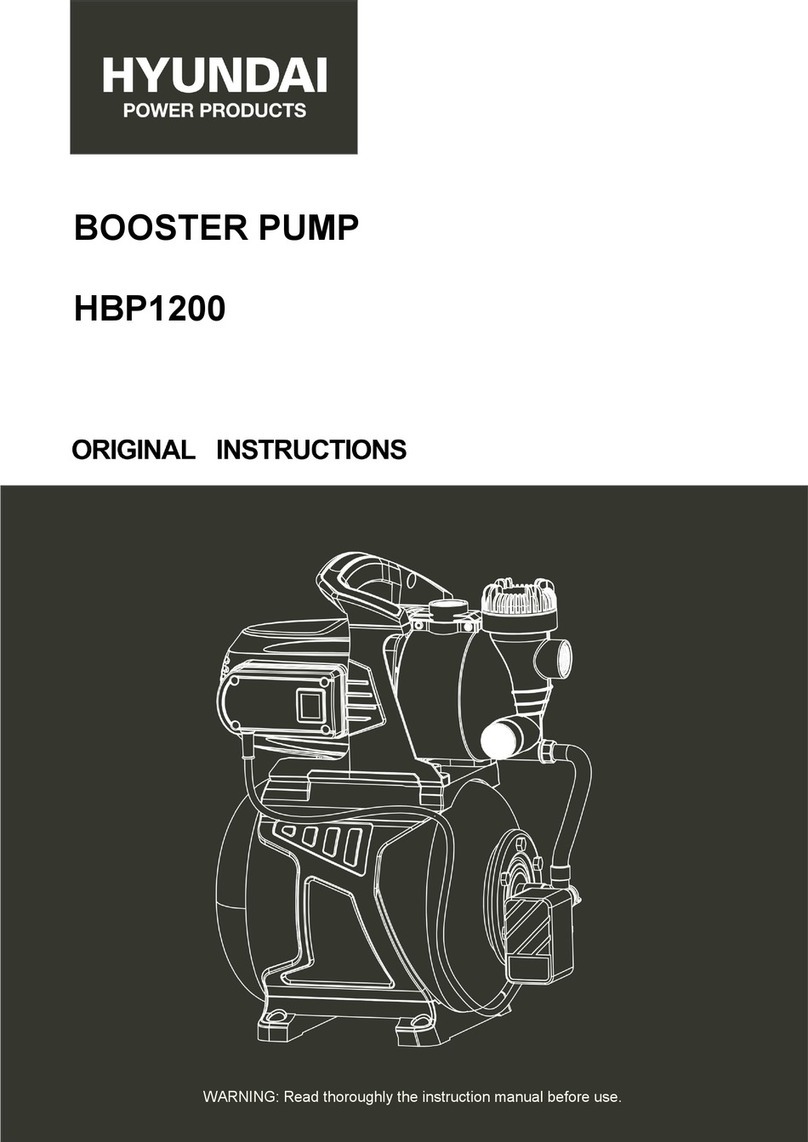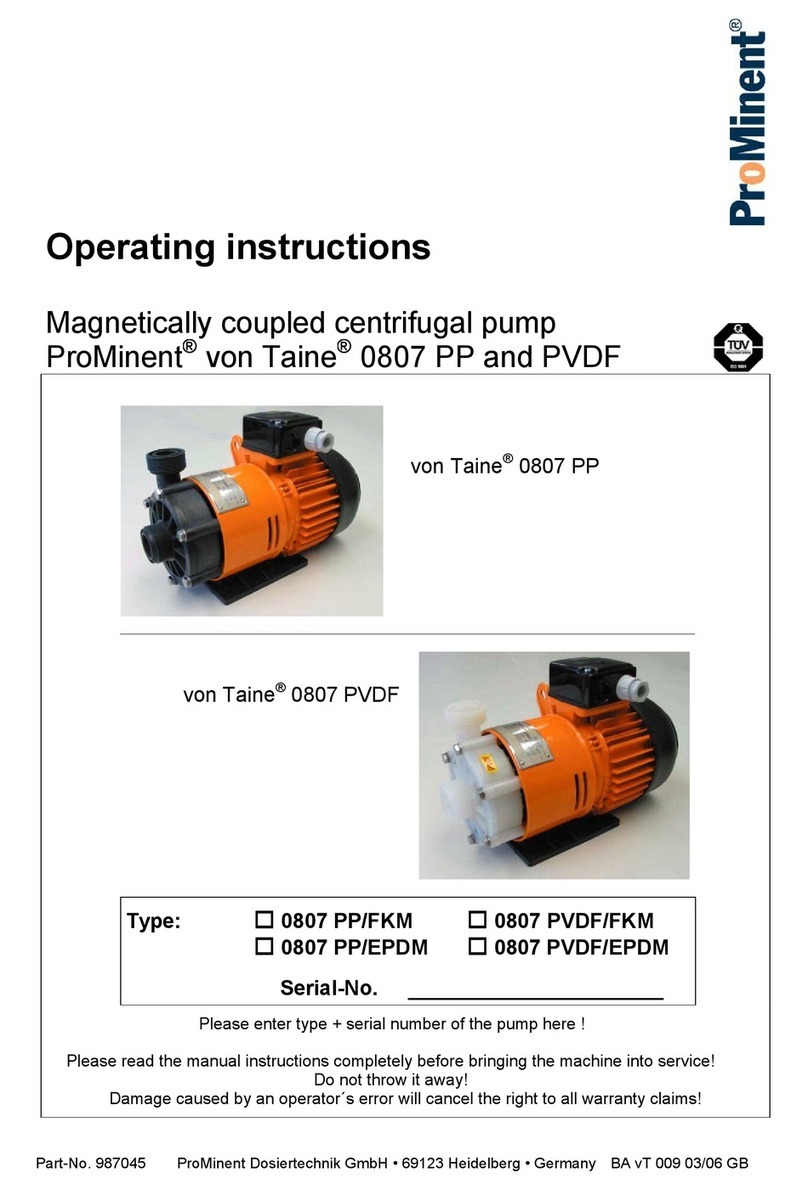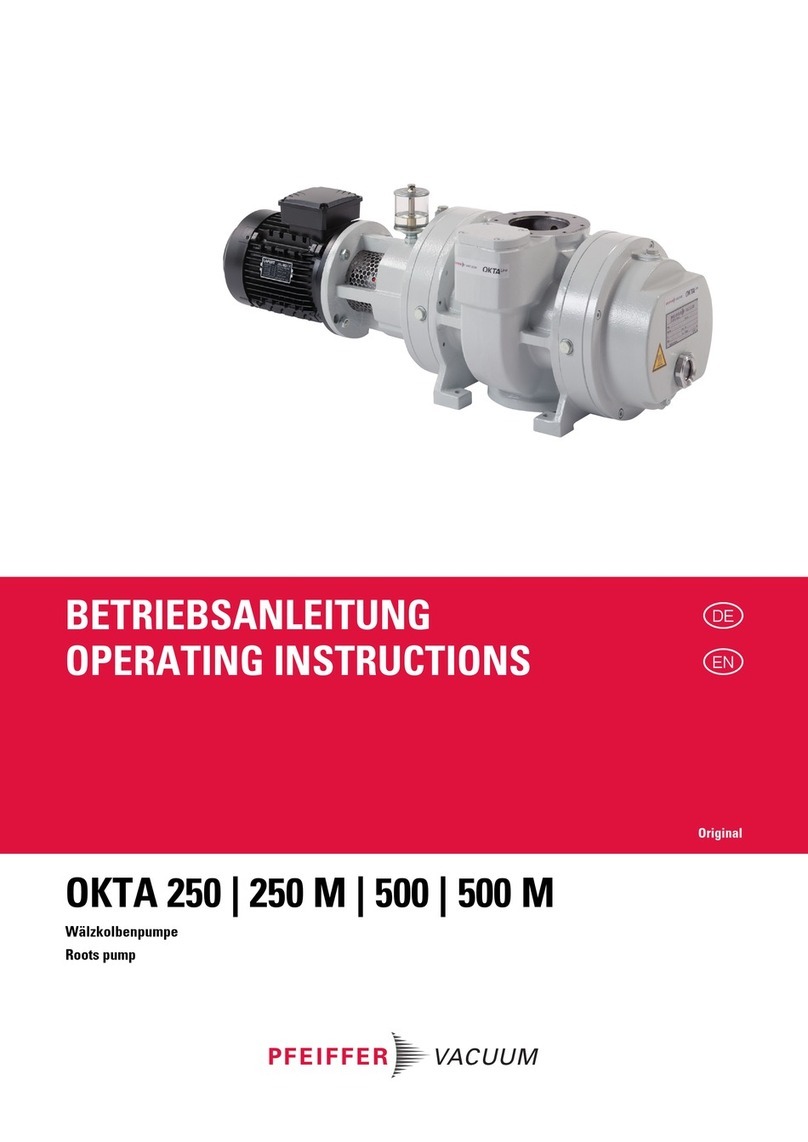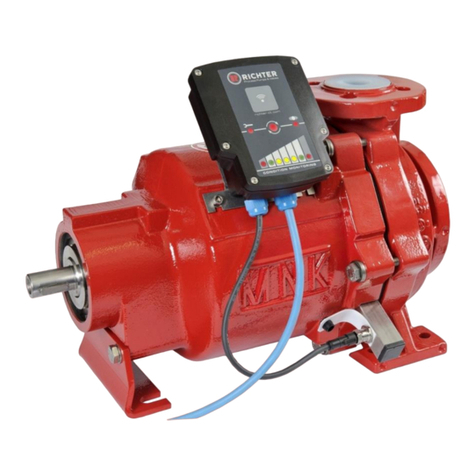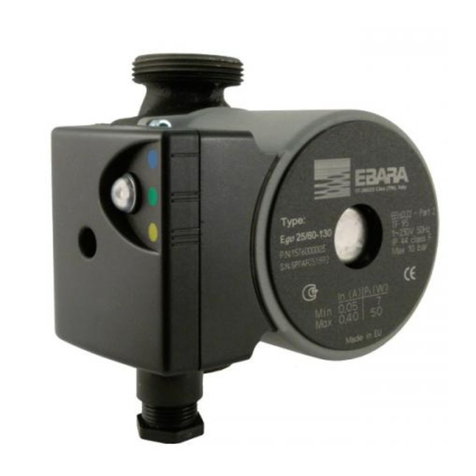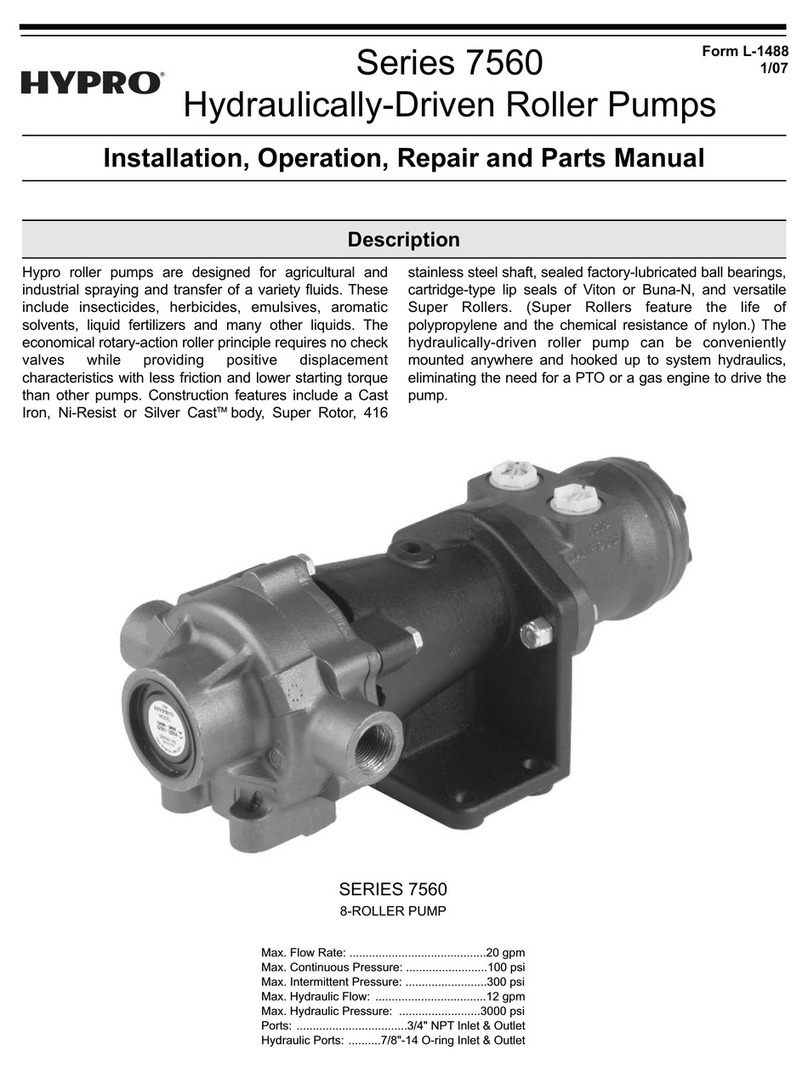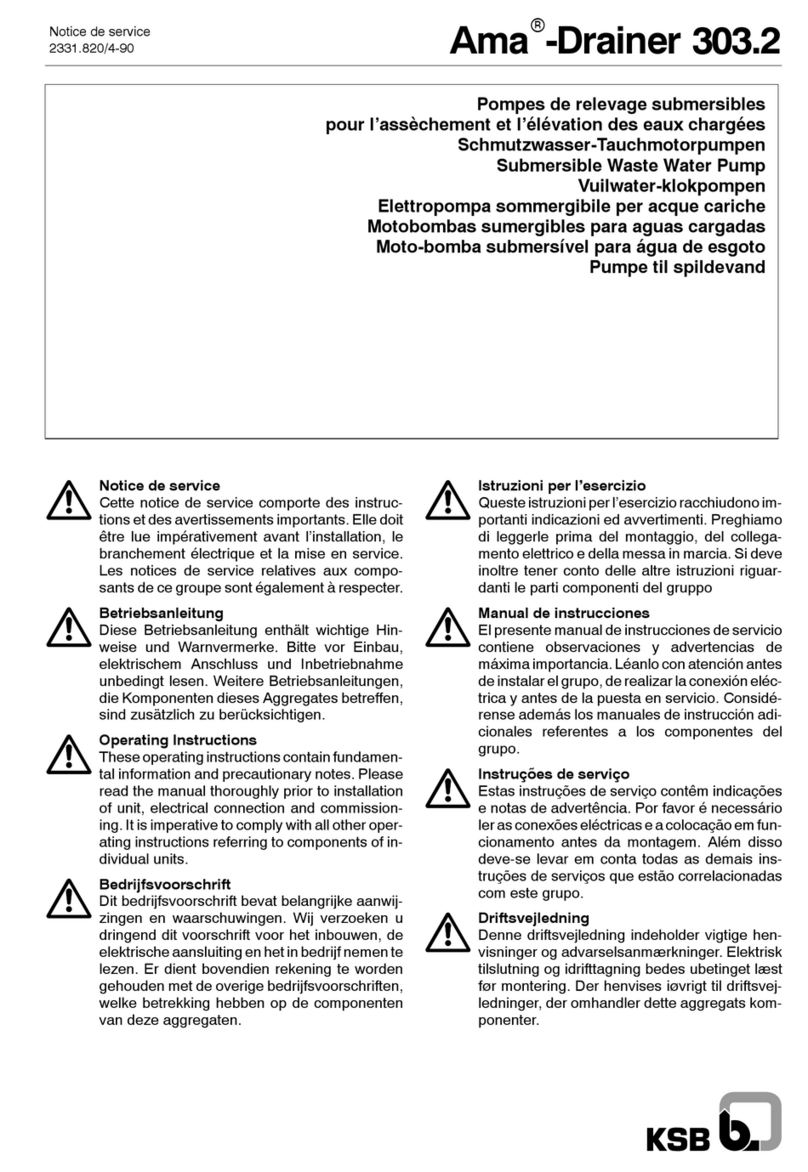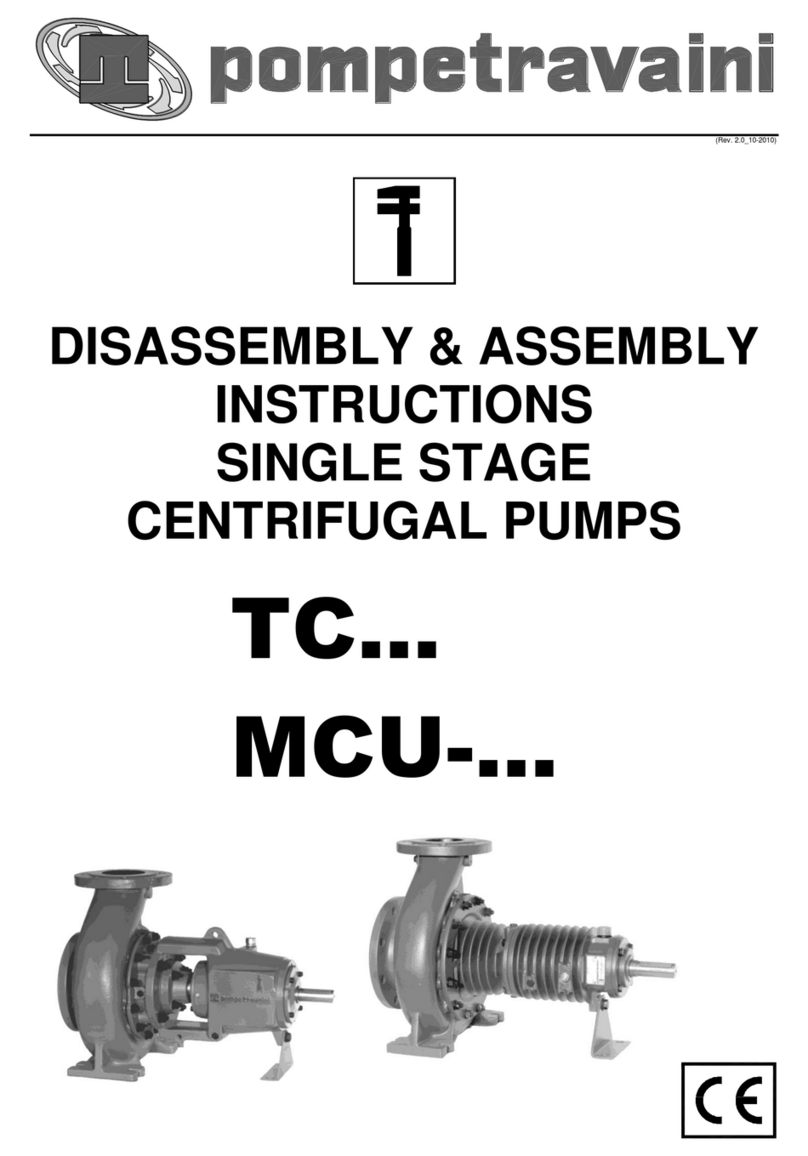INSTRUCTION MANUAL –AIR DRIVEN HYDRAULIC PUMPS:
Model Series: AHP1120, AHP1120R, AHP1121, AHP1121R, AHP1122, AHP1122R, AHP1141, AHP1142,
HAP21011, HAP21012, HAP21014, HAP21016, HAP21021, HAP21022, HAP21024, HAP21026, HAP21031,
HAP21032, HAP21034, HAP21036, HAP21041, HAP21042, HAP21044, HAP21046,
Hi-Force Limited –Prospect Way –Daventry –Northants NN11 8PL –United Kingdom
Tel: +44(0) 1327 301000: Fax: +44(0) 1327 706555: Website: www.hi-force.com
11.0 Preparing the Pump for first use:
1. Immediately after unpacking, examine
the pump for signs of transit damage
and if found contact the shipping
company.
2. Establish the oil level in the oil reservoir
using the level gauge on the end of
the tank. Depending on the shipping
method used, the reservoir may either
be supplied full or empty. If the
reservoir is empty it must be correctly
filled before use. Remove the
temporary transit plate which is fitted in
the position of the filler breather cap
(3) by undoing the 3 screws. Fit the filler
breather cap (packed separately)
using the 3 screws which held the
transit plate.
3. To fill the reservoir: Remove the filler
cap (3) and fill the tank with clean
HFO46 oil to the upper level indicator
(2).
4. Connect the air supply to the Motor air
inlet (11). Max inlet pressure 7 bar. It is
recommended that a filter and
lubricator are incorporated in the air
supply.
5. Ensure your air supply circuit includes a
ball or sliding valve close at hand,
which can be used to control the air
supply.
6. Remove hexagon headed plugs and
make hydraulic connections to service
ports (8).These ports have a 3/8” NPT
female thread and the corresponding
male connections should be wrapped
with PTFE tape or other suitable
sealant.
7. Ensure the lever of the hydraulic
directional control valve (7) is in the
neutral position. This is fully
anticlockwise for models with 2 way
valve (HAP21021, HAP21022, HAP21024,
HAP21026) and the central position for
models with 3 or 4 way valves
(HAP21031, HAP21032, HAP20134,
HAP20136, HAP21041, HAP21042,
HAP21044, HAP21046) Where valves
are remotely mounted, ensure these
are adjusted such that pressure will not
build up during the starting operation.
11.1 Operation of the Pump:
Hi-Force does not necessarily know what
equipment this pump will power. Read and
understand the appropriate operating
instructions relating to the equipment in use.
1. With all hydraulic connections
made and air motor running,
operate the directional control
valve (7) if fitted to control the
cylinders or tools in use.
2. For pumps with 2 way valves:
Turning the lever full clockwise will
supply oil to the service port and
advance the cylinder. Turning the
lever anticlockwise will retract the
cylinder.
3. For pumps with 3 way valves: Mid
position is the load hold position.
Moving the lever so that it is above
the service port (anti-clockwise)
will supply oil to the port and
advance the cylinder. Moving the
lever away from the service port
will connect the service port to
tank and retract the cylinder.
4. For pumps with 4 way valves: Mid
position is the load hold position.
Moving the lever so that it is above
either service port will supply oil to
that port and connect the
opposite port to tank.
5. The pump is fitted with an
adjustable pressure relief valve (6)
to restrict the out-put pressure to
any desired value up to the
maximum working pressure of the
pump. To increase the relief valve
setting turn the control knob
clockwise. To decrease the relief
valve setting turn the control knob
anticlockwise. Leaving the pump
running for extended periods with
the relief valve operating will
cause the oil to overheat.
6. Ensure that the oil level does not
fall below the minimum level as
shown by the lower indicator (2)
12.0 Maintenance:
In order to ensure the longest service life and
best performance from your pump, regularly
carry out the following routine maintenance.
Inspect the pump for damage after
each use
If a gauge is fitted to the pump ensure
it is regularly checked to ensure it is
within its calibration limits.
Regularly check the oil level in the
pump reservoir by means of the oil
level gauge ( item 2 in the diagrams)
Never run the pump with the oil level in
the reservoir below its bottom limit.









